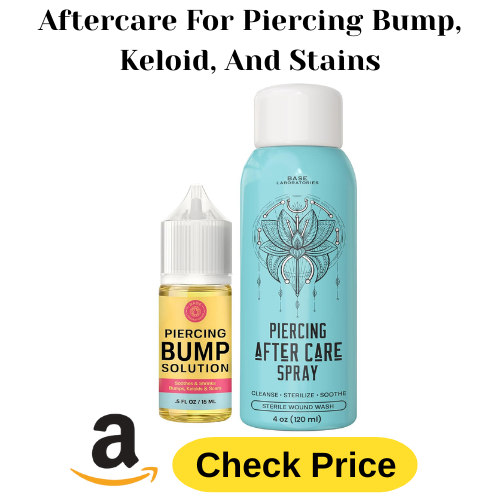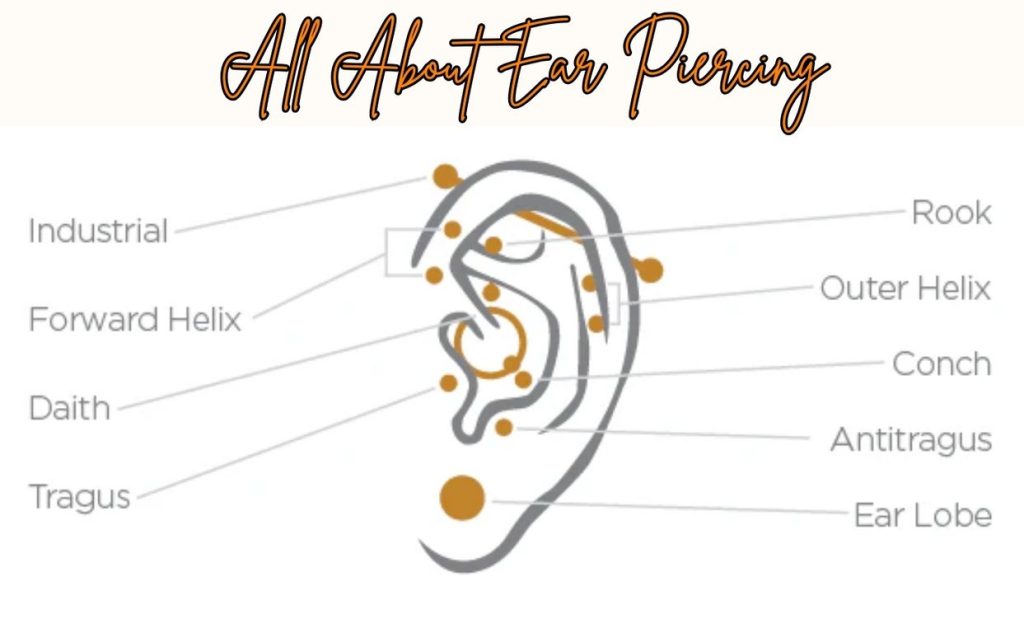Ear piercing is a common practice that involves creating a small hole in the ear to insert jewelry. This tradition dates back thousands of years and is prevalent in many cultures around the world. Ear piercing can be done for various reasons, including fashion, cultural practices, or personal expression. Let’s explore what ear piercing is, the different types, the process, and how to take care of a new piercing.
A Brief History of Ear Piercing
Ear piercing has a long and rich history. Ancient mummies, such as the famous Ötzi the Iceman from around 3300 BC, were found with pierced ears. This indicates that ear piercing was practiced even in prehistoric times. In various cultures, ear piercing has different meanings and significance. For instance, in some African tribes, ear piercings symbolize status or are part of a rite of passage. In India, it is a common tradition for young girls to have their ears pierced, often as part of a religious ceremony.
Types of Ear Piercings
There are many types of ear piercings, and each one has its unique style and placement on the ear. Here are some of the most popular types:
- Lobe Piercing: This is the most common and traditional type of ear piercing. It is done on the soft lower part of the ear and is often the first piercing people get. Lobe piercings are popular because they are less painful and heal faster.
- Helix Piercing: Located on the upper cartilage of the ear, helix piercings are trendy and can be single or multiple. They add a stylish touch and can accommodate different types of jewelry.
- Tragus Piercing: This piercing is done on the small flap of cartilage that partially covers the ear canal. It is a bit more painful due to the thicker cartilage but looks unique.
- Daith Piercing: This involves piercing the innermost cartilage fold of the ear. Some believe that daith piercings can help relieve migraines, although this is not scientifically proven.
- Industrial Piercing: Also known as a scaffold piercing, this involves two holes connected by a single piece of jewelry, usually a barbell, across the upper ear cartilage.
- Rook Piercing: Done on the cartilage ridge between the inner and outer conch, rook piercings are less common but very distinctive.
- Conch Piercing: This is located in the middle part of the ear cartilage and can be either inner or outer conch. It allows for a variety of jewelry styles.
The Ear Piercing Process
Getting your ears pierced is a relatively simple procedure, but it’s important to go to a professional piercer who follows proper hygiene practices. Here’s what to expect:
- Choosing the Piercing and Jewelry: First, you’ll decide on the type of piercing and the jewelry you want. It’s essential to choose high-quality, hypoallergenic jewelry, especially for a new piercing.
- Preparation: The piercer will clean the area with an antiseptic to reduce the risk of infection. They will mark the spot with a pen to show where the piercing will be placed.
- The Piercing: Using a sterile needle or piercing gun, the piercer will quickly create a hole in the marked spot. While the needle is preferred for cartilage piercings due to precision and less trauma, many places use piercing guns for lobe piercings.
- Inserting the Jewelry: Once the hole is made, the piercer will insert the chosen piece of jewelry. This step is usually quick and relatively painless.
- Aftercare Instructions: The piercer will give you detailed aftercare instructions to help your new piercing heal properly. Following these instructions is crucial to avoid infections and complications.
Caring for a New Ear Piercing
Proper aftercare is vital to ensure your new piercing heals well and stays healthy. Here are some general aftercare tips:
- Keep it Clean: Clean the piercing site twice a day with a saline solution or a piercing aftercare spray. Avoid using alcohol or hydrogen peroxide, as these can be too harsh and dry out the piercing.
- Avoid Touching: Try not to touch or twist the jewelry unnecessarily. Your hands carry bacteria that can cause infections.
- Be Gentle: Be careful not to bump or snag your new piercing, especially when brushing your hair or changing clothes. This can cause irritation and delay healing.
- Avoid Swimming: Stay away from swimming pools, hot tubs, and natural bodies of water for at least a few weeks, as these can harbor bacteria.
- Watch for Signs of Infection: Redness, swelling, pus, and excessive pain are signs of infection. If you notice any of these, seek advice from a healthcare professional.
- Patience is Key: Healing times vary depending on the type of piercing. Earlobe piercings typically heal in 6-8 weeks, while cartilage piercings can take several months to a year. Be patient and follow the aftercare routine throughout the healing process.
Risks and Considerations For Ear Piercing
While ear piercing is generally safe, there are some risks to be aware of:
- Infection: If not cared for properly, new piercings can get infected. It’s important to follow aftercare instructions and seek medical help if you suspect an infection.
- Allergic Reactions: Some people may have allergic reactions to certain metals. Choose hypoallergenic jewelry made of materials like surgical steel, titanium, or gold.
- Scarring: Improper care or trauma to the piercing can lead to scarring or keloids, which are raised, thickened areas of skin.
- Rejection or Migration: In some cases, the body may reject the jewelry, causing it to move or come out. This is more common with surface piercings but can happen with ear piercings too.
Frequently Asked Questions About Ear Piercing
Q: Is ear piercing painful?
A: Ear piercing involves a quick pinch that may cause brief discomfort, but it is generally considered a minor pain. The level of pain can vary depending on the individual’s pain tolerance and the location of the piercing.
Q: How long does it take for an ear piercing to heal?
A: Healing times vary by piercing type. Earlobe piercings usually heal in 6-8 weeks, while cartilage piercings can take several months to a year to fully heal.
Q: What is the best age to get ears pierced?
A: There is no specific best age for ear piercing; it depends on personal and parental preference. Some cultures pierce ears in infancy, while others wait until the child can decide for themselves.
Q: What type of jewelry should be used for a new piercing?
A: For new piercings, hypoallergenic jewelry made from materials like surgical steel, titanium, or gold is recommended to minimize the risk of allergic reactions and infections.
Q: How do I care for a new ear piercing?
A: Clean the piercing twice a day with a saline solution, avoid touching or twisting the jewelry unnecessarily, and keep the area dry and free from irritants. Follow any additional aftercare instructions provided by your piercer.
Q: Can I swim with a new ear piercing?
A: It is best to avoid swimming in pools, hot tubs, and natural bodies of water for at least a few weeks after getting a new piercing to reduce the risk of infection.
Q: What should I do if my piercing gets infected?
A: If you notice signs of infection, such as redness, swelling, pain, or discharge, consult a healthcare professional promptly. Do not remove the jewelry, as this can cause the piercing to close and trap the infection inside.
Q: Can I change my earrings right after getting my ears pierced?
A: You should wait until the piercing is fully healed before changing earrings. Changing jewelry too soon can disrupt the healing process and increase the risk of infection.
Q: What are the risks of ear piercing?
A: Common risks include infection, allergic reactions to the jewelry, scarring, and the potential for the body to reject the jewelry. Choosing a professional piercer and following proper aftercare can minimize these risks.
Q: Can I pierce my ears at home?
A: It is strongly recommended to get ear piercings done by a professional piercer who uses sterile equipment and follows proper hygiene practices to reduce the risk of complications and infections.
Final Words
Ear piercing is a popular and relatively simple way to express personal style and adhere to cultural traditions. With a variety of styles to choose from, ear piercings offer endless possibilities for customization. By understanding the process and committing to proper aftercare, you can enjoy your new piercing safely and stylishly. Always choose a professional piercer and high-quality jewelry to ensure the best experience and outcome.




